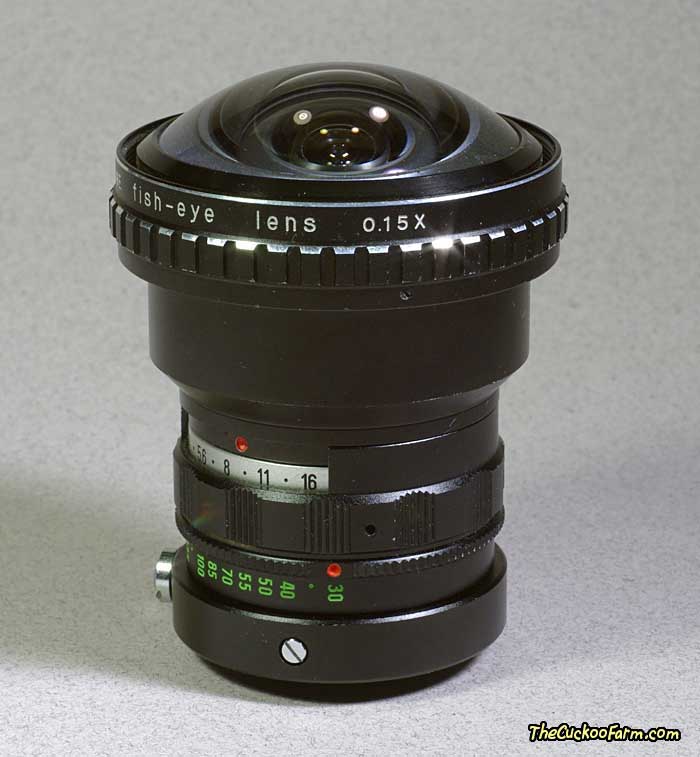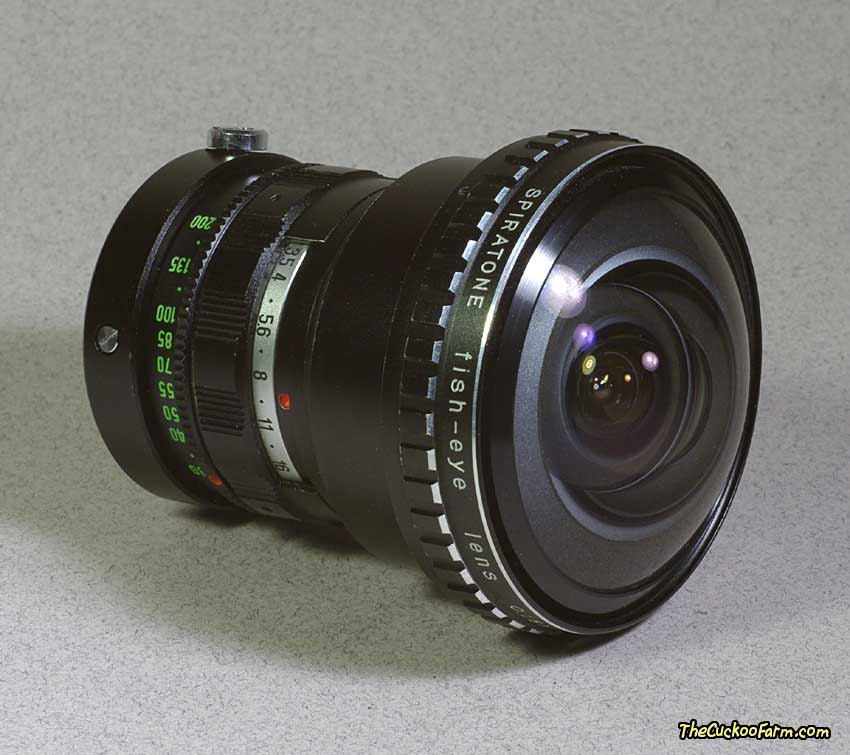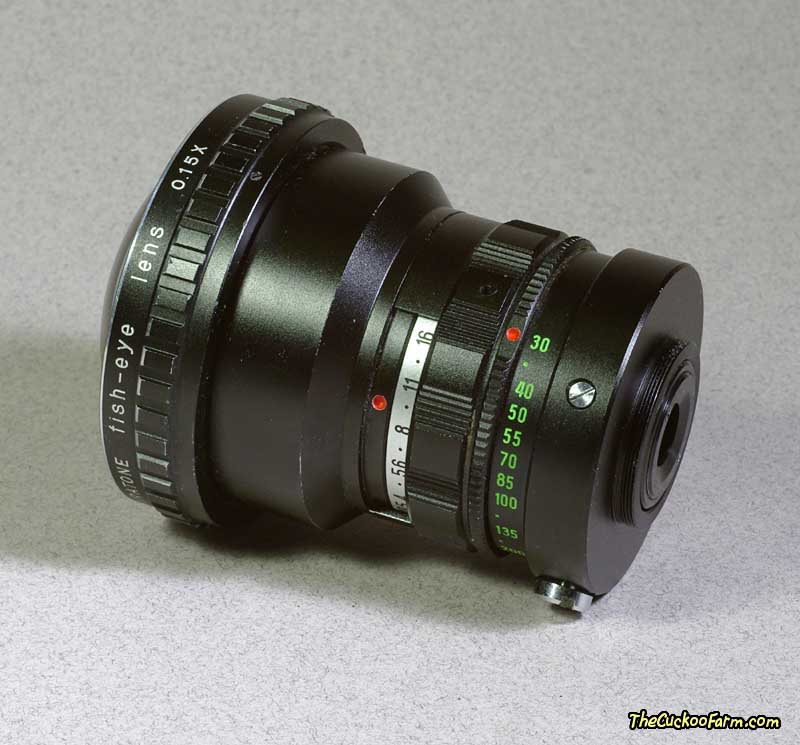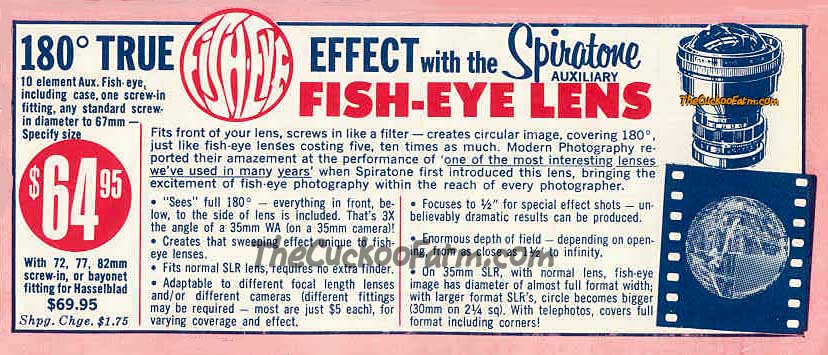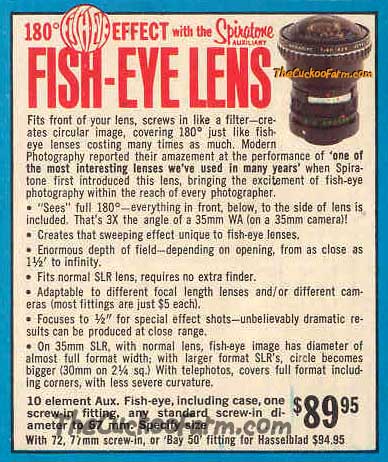Spiratone Fish-Eye Lens
Spiratone 180 Degree Auxiliary Fish Eye Lens
Spiratone Fish-Eye Lens
- 10 elements in 6 groups.
- 180° Angle of View. Variable with different focal length prime lenses.
- Final focal length is 0.15X the prime lens focal length.
- For most lenses with proper filter adapter.
This is the Spiratone Auxiliary Fish-Eye Lens. It provides a true 180 degree field of view (the Spiratone Curvatar achieves only 150 degrees). It attaches to your camera's lens by screwing into the filter threads with the appropriate adapter. I would avoid buying one of these lenses without an adapter (unless it's a really good deal) as the adapters are not the easiest things to find (talking from experience).
USING THE LENS
Ok, here's the lowdown on how to use this lens. This is the official way, later on you can experiment. First choose the prime lens you are going to use. The prime lens is the actual lens that will be mounted to the camera. Your choice of focal lengths will need to be between 30 and 200mm. Anything lower/wider than 30mm will have the diameter of the circular image be too small and will start to have vignetting issues. Anything larger than 200mm usually has a lack of light issue.
Let's assume you are using a prime lens that is 50mm standard lens. With the prime lens mounted to the camera you would attach the Spiratone Fish-Eye with it's appropriate adapter that fits your prime lens filter ring. So, now you have your camera/prime lens/fish-eye adapter/fish-eye lens as one unit. Next you need to set all the adjustments. The prime lens focus ring should be set to infinity and the aperture set to the widest opening (smallest #). The first adjustment on the fish-eye lens would be dialing in the appropriate prime lens focal length. On the ring closest to the camera, you would align the red dot to the green number that corresponds to your prime lens focal length, in this case the green 50. When set at 50, the available aperture range on the fish-eye lens is f/5.6 to f/32. Now step down the aperture 2 to 3 stops from it's widest opening. (NOTE: This lens has half stops, I'm assuming they mean full stops.) This will put you in the f/11 to f/16 range. At these settings the depth of field should be about 3' to infinity... not bad.
The quick way checklist.
- Set the prime lens to infinity.
- Set the prime lens to its widest opening.
- Set the fish-eye to the MM of the prime lens.
- Step down the fish-eye 2-3 f stops.
The above assumes a full 35mm frame or a DSLR with a full sized sensor. DSLR's with an APS sized sensors will end up with the top and bottom of the circle image cut off.

